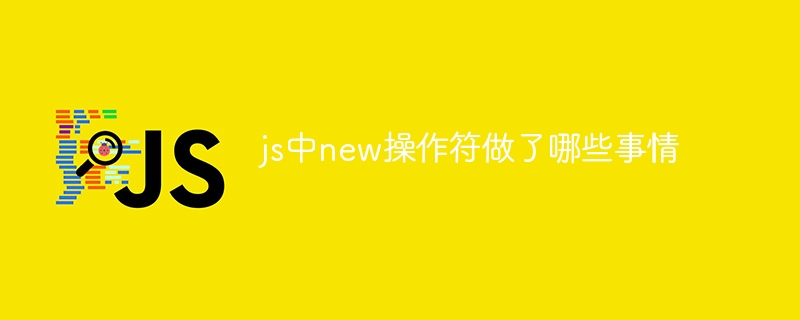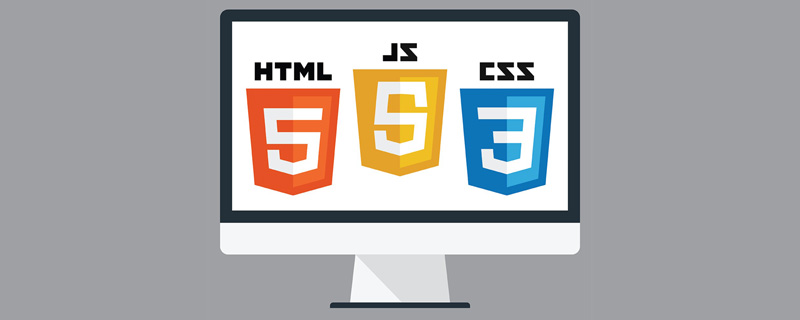This time I will show you how to use front-end and back-end isomorphism in JS, and what are the precautions for using front-end and back-end isomorphism in JS. The following is a practical case, let's take a look.
What is front-end and back-end isomorphism
Clear three concepts: "Back-end rendering" refers to the traditional ASP, Java or PHP rendering mechanism; "Front-end rendering" It refers to using JS to render most of the content of the page, which represents the now popular SPA single-page application; "isomorphic rendering" refers to the front-end and back-end sharing JS, and Node.js is used to directly output HTML when rendering for the first time. Generally speaking, isomorphic rendering is a common part between the front and back ends.
It feels like the front-end is really a toss-up. Separation of front-end and back-end was popular before. Why do we need to make front-end and back-end isomorphism now?
The reason is that the popular SPA front-end single-page application is relatively heavy and requires a lot of files to be loaded for the first visit. The first load is too slow and the user needs to wait for the front-end to render the page. It is not conducive to SEO and caching, and has certain development thresholds.
By reusing templates and JS files, the front-end and back-end isomorphism allows a code to run on the server and browser at the same time. The first rendering uses nodejs to render the page, and then uses SPA routing to jump. It can effectively reduce the waiting time for users to access for the first time, and is friendly to SEO and easy to cache.
Project Introduction
This front-end and back-end isomorphic project is mainly divided into two parts, one is a rendering server based on koa2, and the other is based on native JS and zepto Front-end SPA.
The project is characterized by not using frameworks such as vue and react, low threshold, fast development speed, easy to get started, relatively lightweight, and the core router part only has about a hundred lines of code. It is suitable for scenarios where there are few page interactions and infrequent changes, and can effectively improve performance and loading speed.
Front-end part
The core of the front-end part is the routing part. The specific implementation can be based on history API or hash. There are many implementations on the Internet. This time we mainly talk about the architecture
The front-end part adopts MVC hierarchical structure.
What the router layer does is mainly to create routing examples, call the get method of the routing, and bind functions from the control layer to specific pages.
Form such as:
import control from '../control'
//路由的构造函数支持传入渲染函数,路由的全局名称,路由跳转前调用的钩子
router = new Router(render,'ROUTER',beforeFn)
router.get('/page/a', control.pageA')
The main purpose of the control layer is to load the rendering template and rendering data shared with the backend, and run the page function after rendering the page
Form such as:
let control = {
pageA(req,res) {
//webpack的动态加载,代码分割功能
import(/* webpackChunkName: "pageA" */'script/pageA').then(module=> {
// 检测该页面是否已有服务器渲染好,是的话直接运行module.default
//否则加载模板和数据进行渲染,最后再调用页面函数
if(this.needRender(module.default)) {
//加载数据时访问的地址就是当前准备渲染的页面地址,只是加上了json=1的参数
loadData('pageA').then(data =>
res.render(xtpl,data,module.default))
}
}
}
// 捕捉webpack热更新,让他只进行相当于页面跳转的操作而不是刷新页面
if(module.hot) {
module.hot.accept(['script/pageA'], () => {
control[ROUTER.req.currentControl].call(ROUTER,null,ROUTER.res)
})
}
The view layer is the template. The xtpl template is used here. It supports rendering the page in both the server environment and the front-end environment.
The form of the page function
page The function requires the use of es6 module writing, in conjunction with the on-demand loading function of webpack
export default () => {
window.addEventListener('scroll', fn)
//页面函数支持返回一个卸载函数,在页面离开的时候会被调用
//主要用于内存的释放,定时器的清除,事件监听的移除等等
return function () {
window.removeEventListener('scroll', fn)
}
}
Backend part
A rendering server built using koa2, after receiving the front-end transmission When a page request comes, it will request data from the API server and identify whether the page request contains the parameter json=1. If it does, it is a request when the front-end route jumps, and the data can be returned directly. If it does not include json Parameters, load the template shared with the front end, render it with the data, and send it to the browser.
I believe you have mastered the method after reading the case in this article. For more exciting information, please pay attention to other related articles on the php Chinese website!
Recommended reading:
react antd component to make a complete backend (with code)
react application development scaffolding use Case
The above is the detailed content of How to use front-end and back-end isomorphism in JS. For more information, please follow other related articles on the PHP Chinese website!
 如何使用JS和百度地图实现地图平移功能Nov 21, 2023 am 10:00 AM
如何使用JS和百度地图实现地图平移功能Nov 21, 2023 am 10:00 AM如何使用JS和百度地图实现地图平移功能百度地图是一款广泛使用的地图服务平台,在Web开发中经常用于展示地理信息、定位等功能。本文将介绍如何使用JS和百度地图API实现地图平移功能,并提供具体的代码示例。一、准备工作使用百度地图API前,首先需要在百度地图开放平台(http://lbsyun.baidu.com/)上申请一个开发者账号,并创建一个应用。创建完成
 如何使用JS和百度地图实现地图多边形绘制功能Nov 21, 2023 am 10:53 AM
如何使用JS和百度地图实现地图多边形绘制功能Nov 21, 2023 am 10:53 AM如何使用JS和百度地图实现地图多边形绘制功能在现代网页开发中,地图应用已经成为常见的功能之一。而地图上绘制多边形,可以帮助我们将特定区域进行标记,方便用户进行查看和分析。本文将介绍如何使用JS和百度地图API实现地图多边形绘制功能,并提供具体的代码示例。首先,我们需要引入百度地图API。可以利用以下代码在HTML文件中导入百度地图API的JavaScript
 js字符串转数组Aug 03, 2023 pm 01:34 PM
js字符串转数组Aug 03, 2023 pm 01:34 PMjs字符串转数组的方法:1、使用“split()”方法,可以根据指定的分隔符将字符串分割成数组元素;2、使用“Array.from()”方法,可以将可迭代对象或类数组对象转换成真正的数组;3、使用for循环遍历,将每个字符依次添加到数组中;4、使用“Array.split()”方法,通过调用“Array.prototype.forEach()”将一个字符串拆分成数组的快捷方式。
 如何使用JS和百度地图实现地图热力图功能Nov 21, 2023 am 09:33 AM
如何使用JS和百度地图实现地图热力图功能Nov 21, 2023 am 09:33 AM如何使用JS和百度地图实现地图热力图功能简介:随着互联网和移动设备的迅速发展,地图成为了一种普遍的应用场景。而热力图作为一种可视化的展示方式,能够帮助我们更直观地了解数据的分布情况。本文将介绍如何使用JS和百度地图API来实现地图热力图的功能,并提供具体的代码示例。准备工作:在开始之前,你需要准备以下事项:一个百度开发者账号,并创建一个应用,获取到相应的AP
 js中new操作符做了哪些事情Nov 13, 2023 pm 04:05 PM
js中new操作符做了哪些事情Nov 13, 2023 pm 04:05 PMjs中new操作符做了:1、创建一个空对象,这个新对象将成为函数的实例;2、将新对象的原型链接到构造函数的原型对象,这样新对象就可以访问构造函数原型对象中定义的属性和方法;3、将构造函数的作用域赋给新对象,这样新对象就可以通过this关键字来引用构造函数中的属性和方法;4、执行构造函数中的代码,构造函数中的代码将用于初始化新对象的属性和方法;5、如果构造函数中没有返回等等。
 用JavaScript模拟实现打字小游戏!Aug 07, 2022 am 10:34 AM
用JavaScript模拟实现打字小游戏!Aug 07, 2022 am 10:34 AM这篇文章主要为大家详细介绍了js实现打字小游戏,文中示例代码介绍的非常详细,具有一定的参考价值,感兴趣的小伙伴们可以参考一下。
 php可以读js内部的数组吗Jul 12, 2023 pm 03:41 PM
php可以读js内部的数组吗Jul 12, 2023 pm 03:41 PMphp在特定情况下可以读js内部的数组。其方法是:1、在JavaScript中,创建一个包含需要传递给PHP的数组的变量;2、使用Ajax技术将该数组发送给PHP脚本。可以使用原生的JavaScript代码或者使用基于Ajax的JavaScript库如jQuery等;3、在PHP脚本中,接收传递过来的数组数据,并进行相应的处理即可。
 js是什么编程语言?May 05, 2019 am 10:22 AM
js是什么编程语言?May 05, 2019 am 10:22 AMjs全称JavaScript,是一种具有函数优先的轻量级,直译式、解释型或即时编译型的高级编程语言,是一种属于网络的高级脚本语言;JavaScript基于原型编程、多范式的动态脚本语言,并且支持面向对象、命令式和声明式,如函数式编程。


Hot AI Tools

Undresser.AI Undress
AI-powered app for creating realistic nude photos

AI Clothes Remover
Online AI tool for removing clothes from photos.

Undress AI Tool
Undress images for free

Clothoff.io
AI clothes remover

AI Hentai Generator
Generate AI Hentai for free.

Hot Article

Hot Tools

Zend Studio 13.0.1
Powerful PHP integrated development environment

Atom editor mac version download
The most popular open source editor

ZendStudio 13.5.1 Mac
Powerful PHP integrated development environment

SublimeText3 Mac version
God-level code editing software (SublimeText3)

Dreamweaver Mac version
Visual web development tools






